For an experienced aquarist, the maintenance of even the whimsical underwater inhabitants no longer seems complicated, since all the necessary procedures have been brought to automaticity. But beginners should choose the least demanding living creature, which includes molliesia. However, even this modest creature needs certain conditions, so let's try to figure out how to keep such a pet.
Description
Aquarium fish mollinsia belongs to the genus Pecilieva, to which other species popular among beginners belong, such as the same swordsmen or guppies. If all of a sudden you are aware of what the whole Pecilia looks like, then it is possible that you accidentally consider mollynesia Pecilia.
Mollinesia is a viviparous creature and this is one of the main criteria that make young aquarists become interested in this fish.

As is the case with most inhabitants of domestic reservoirs, those individuals that live in an aquarium are the fruit of breeding work and look much more interesting than their wild companions. So, in the natural environment, molliesia is a simple silverfish, which is sometimes characterized by a yellowish tint, but at home you can see very spectacular black mollies, as well as slightly rarer yellow and speckled individuals. The differences do not end there: the varieties of mollies can have different sizes, not to mention the variations in the shape of the fins.
In the natural environment, mollinsia lives off the coast of North and Central America.Moreover, there are officially recognized species (namely species, not breeds) that are not found in nature and are a purely aquarium property. Most species of molliesia are freshwater, but there are exceptions to this rule.
Significant species diversity affects not only the habitat and appearance of the fish, but also how long it can live. The life span of mollies is on average 4–8 years, while some species from those that are not found in the wild, in principle, do not reach such indicators and live modest 2-3 years. Moreover, the life expectancy of an average female is always slightly higher than that of her friend.

Kinds
We have already said that molliesia is a diverse fish and should not be taken as one species. In fact, in the nature of such fish there are about three dozen species. These include both those that appeared naturally and those specially bred by humans. At home, they often contain exactly those that were born thanks to breeders. Such varieties have a more attractive appearance, and are often also deprived of the ability to survive in natural conditions.
To understand what kind of small fish it is worth making under your color preferences, we will familiarize ourselves with the names of the most popular species and breeds.
- Peten - This is a relatively small creature, which is often confused with swordsmen, since this species also has a characteristic process on the tail, although not so large. The peten is characterized by a monochromatic mother-of-pearl scale, but on the fins there is a clearly visible identification mark in the form of a red line.

- Free mollies may have different “color schemes”, but almost always her color consists of two colors: The main color is inherent in the body, while the fins are distinguished by increased diversity and beauty. Quite often this fish is found in the following “design”: with a black matte body, its ventral fin has a very bright silver tone.

- Sailing Molliesia got its name for oversized fins, which are also emphasized by a border of a characteristic red color for greater expressiveness. The fish itself can not be called very bright. Her body colors can be called typical fish: it is gray, silver, bluish and greenish. Nevertheless, this breed is also distinguished by its impressive size - unlike most brothers, it is able to grow up to 12-16 cm in length.
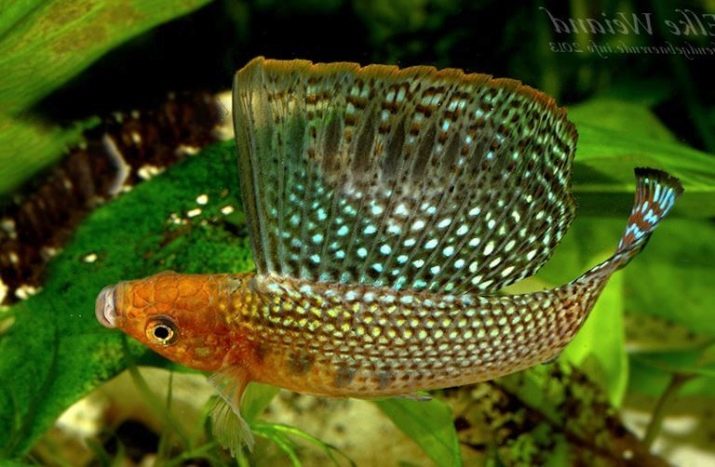
- Sphenops - One of the most popular species, which is not surprising, because such a beauty is simply unable to get lost in any aquarium. This molliesia has an elongated, densely knocked-down body with small fins. Aquarists conquer the deep black color of her body, however, it can have interspersed with other tones, among which mainly yellow and silver.
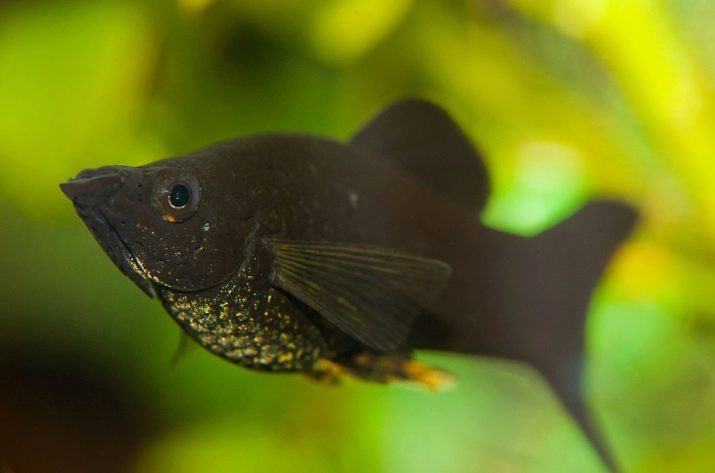
- Snowflake - An artificially bred breed whose appearance is fully consistent with the name, since it is a white fish with a turquoise shine. Color deviation is allowed on the fins, which may be yellow, but purely white individuals also come across.

- Mollinesia balloon - Another artificially bred variety, which received its name for the specific shape of the body. It can be identified by a convex belly - absolutely all individuals of this subspecies seem pregnant, even if in fact it is not.
Representatives of this breed live no more than 3 years, but aquarium connoisseurs love them for their colorful coloring and beautiful fins.

- Dalmatian - Another breeding breed, whose name does not allow to confuse it with any other fish. This creature has white scales, but a fanciful black blot pattern is scattered all over its surface, which makes the resemblance to the famous dog breed obvious.It is curious that the representatives of this species do not have a specific size: an adult can reach 12–13 cm, but 5–6 cm are not considered pathological.

How to choose?
At first glance, the very fact that mollies is rightfully considered one of the least fastidious fish allows you to choose any of the many varieties, focusing purely on the external data of each individual. This approach, of course, is wrong, because you need to consider how the breeding work occurs.
Breeders engaged in the creation of new breeds of fish always focus on an attractive appearance, and any adaptive abilities are put out of the question. A vivid example of how this affects hybrids is the mollinzia balloon - a beautiful individual whose life expectancy is 2-3 times less than that of its completely wild counterparts.

If you want not to try too hard and get decent returns, focus on those breeds that are as close as possible to their wild ancestors, even if in terms of brightness they are somewhat inferior.
In addition, it is advisable to buy fish only in pet stores that inspire confidence - so you can be sure that the individual you have chosen is completely healthy and will not bring any infection to your favorite aquarium. However, even with a well-groomed pet, everything is not always good, so when you come to the store to choose a new friend, pay attention to the behavior of mollies - It should be quite active, as this is a clear sign of health.

How to distinguish a female from a male?
It is easy and difficult to distinguish a male molliesia from his girlfriend at the same time. A key definition criterion that is well suited for beginners is that the female is much larger than her friend and it is clearly visible even to the naked eye. At the same time, a significant confusion can be caused by a difference in age, which inevitably affects the body size of a fish, as well as species diversity - some mollies are smaller than others, therefore, there is not even a certain general standard of dimensions.
Besides, sex can be determined by size only when you have a whole flock of one species in front of you. Otherwise, you must first accurately determine the species, otherwise the result may be inaccurate.
Of the alternative sexual characteristics, it is worth paying attention to the shape of the anal fin. In females, it has a triangular shape, which is generally typical of most mollies, but in males it is interestingly twisted into a tube.


Content Rules
The common assertion that mollies are among the least whimsical aquarium fish is generally true, but this does not mean that they do not need any care at all. Usually, all the needs of this creature are a minimal set of actions for caring for the aquarium with any other unpretentious fish.
It is only important to give them enough free space in the pond and not be too lazy to populate the aquarium not only with fauna, but also with flora.
A notable exception to the general rule is the already mentioned molliesia balloon, whose unusual body shape is a direct consequence of congenital scoliosis. With all diligence, you will not be able to achieve a life expectancy for this species for more than 2-3 years, and in general you need to take care of such a pet carefully, so such liveliness is not a toy for beginners.

If you are really a debutant in aquarium art and have soberly reasoned that you should start with something simpler, choose those types of mollies that are closer to wild ancestors. It’s easy to equip an aquarium for them, but you need to know the basic principles through which your fauna will feel fishy happy.
- Capacity of the vessel. Mollinesias are usually quite large and require a significant amount of water, since they need free space for active movements.Even for two fish you will need a decent size aquarium - within 35-50 liters.
If your population is more extensive, the displacement for each individual can be reduced, but only slightly.

- Water properties. Adherents of faith in the complete unpretentiousness of mollies should know that these creatures are very susceptible to changes in water temperature: it should be in the range of 24-28 degrees, any going beyond this framework is undesirable, and if it happens, it should be very gradual, therefore with substitution should be careful. In terms of the rigidity of mollies, they are also not so “omnivorous”, they need an indicator of about 22-28 dGH.
A plus for the owner will be that it is hard water, which is usually easier to obtain than soft. The pH range is also not too large - you need to adhere to pH 7.1-7.9. Hard and slightly brackish water is exactly what such pets need.

- Priming. That's where the mollies are really unpretentious, so it's the choice of soil for them. Representatives of all aquarium species of mollies live in the middle and upper layers of their makeshift pond, they do not press to the bottom, and therefore you can freely use sand or pebbles, decorating them with any creativity of industrial origin if you wish.

- Vegetation. Breeding mollies literally requires live flora to be abundant in your artificial pond. Small-leaved algae and plants floating on the surface of the water are interesting for these fish as one of the sources of food and it is definitely not worth completely replacing it with store-fed feeds. With the rest of the greens, you can also experiment, but carefully and subject to the presence of what was mentioned above.

- Scenery. Another reason why vegetation should be present in the aquarium with mollies is the tendency of colorful pets to seek shelter. Natural greenery is the simplest and most universal option, while for many more experienced aquarists, the capacity is a real canvas for a masterpiece. If you consider yourself creative, experiment with the installation of artificial plants, find interesting combinations of snags, slides and stone grottoes that will make the underwater world believable.
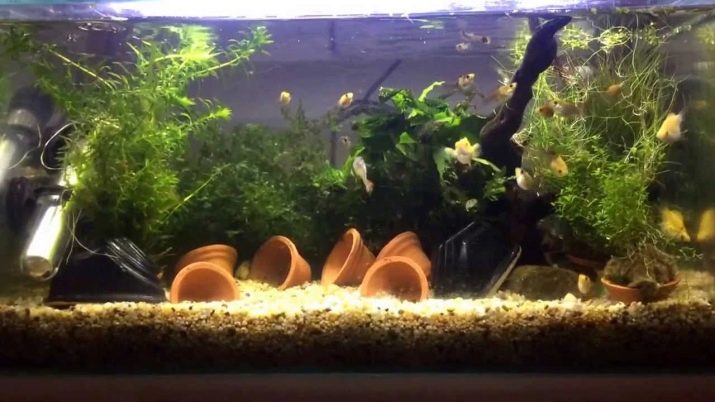
- Lighting. If you remember, in the wild, molliesia live in coastal, shallow waters, and even the climate in the vicinity of the Caribbean does not exactly suffer from a lack of bright sunlight. Similar conditions will have to be created for those who decide to have such living creatures. Lighting devices should work on average 11-13 hours a day. It’s not worth saving - for every liter there should be at least 0.5 W of power, if you recalculate it to incandescent lamps.
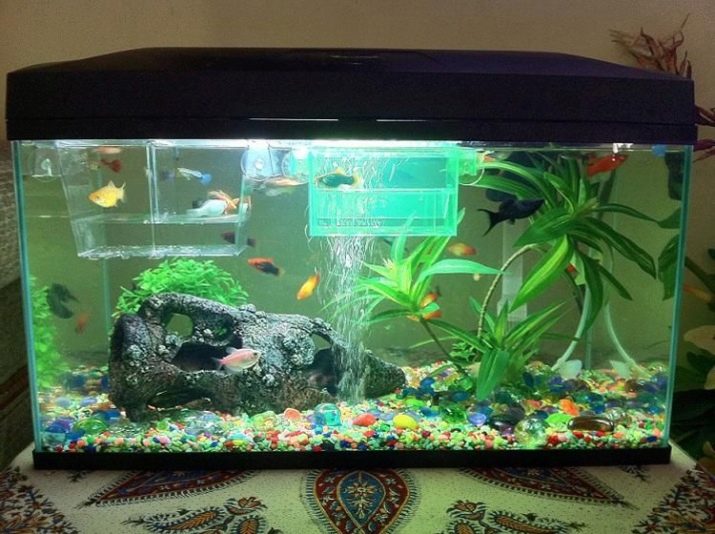
- Aeration. Mandatory since mollies need a lot of air. Poor oxygen water is detrimental to these fish - it is naive to expect that they will survive there long enough.
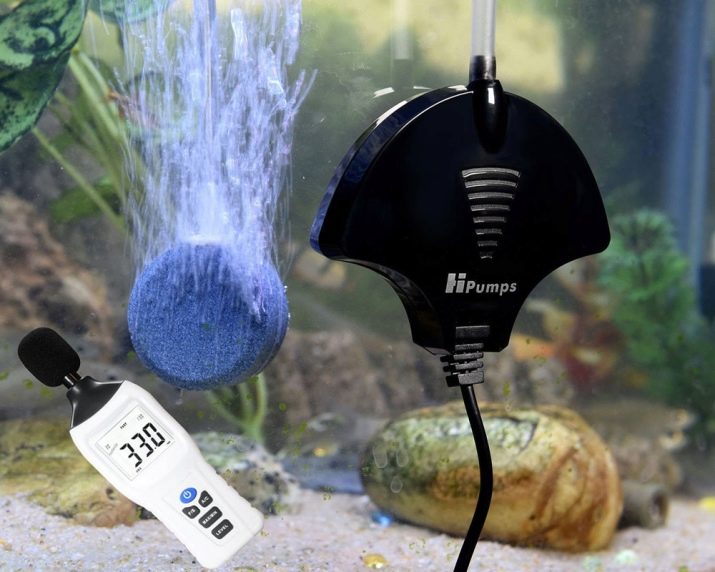
- Filtration. Another very important point in the content of this species is careful observance of the purity of water, since molliesia does not know how to adapt to polluted waters. A weekly change of a quarter of the total fluid volume is a prerequisite that should not be neglected.

As you can see, in terms of conditions, molliesia is still not quite unpretentious: a novice is able to contain it, but it can hardly be called the easiest to care for. In many ways, they are ranked among the unpretentious host for the fact that they are really undemanding to food, but even this indicator is often achieved due to the eternal desire of the underwater beauty to get food on her own, plucking algae or scraping them from stones.
The diet of mollinsia can consist of both live food and dry cereal or frozen foods. At the same time, experts indicate that a diet based solely on live food is contraindicated in such fish.The owner is obliged to alternate menu items, avoiding excessive adaptation of pets to one thing.



Breeding
One of the advantages of breeding mollies at home is that they are viviparous creatures, which means that caring for offspring is much easier for humans. Here, however, one should also pay attention to certain nuances.
The female becomes sexually mature before the male - depending on the species, at 5-7 months of age she is already able to become pregnant. If you bought the entire population of about the same age, then the offspring will have to wait longer, because the male is far from being so early - he will need from 9 months to a year to achieve the necessary conditions.

Even if there’s a pair in your tank that you clearly need to like each other, a miracle will not happen if the water does not meet certain conditions.
- Water should be warm - by allowing its temperature to drop by an extra degree, you involuntarily control the population in the direction of decreasing its number.
- The chemistry of fish relationships is that mollinsia propagates only in salted water. You can cook it yourself - both sea and ordinary table salt are suitable for this, which will need a spoon for every twenty liters of water
- Specialists usually create almost the same conditions for fish that they try to create for people in such a situation.: Future parents are heavily fed, focusing on vitamins and minerals.
Signs that one of the females in your aquarium became pregnant, are common to most simple aquarium fish. First of all, the female begins to predictably gain weight due to the rapidly growing abdomen, in addition, in the lower abdomen, you can notice a characteristic black speck - the skin of the fish is thin enough to see ripening fry through it.

The duration of pregnancy in mollies is from 33 to 45 days. It is advisable that the owner knew approximately when fertilization took place. Then he, having calculated the approximate dates of the birth of babies, will have time to pre-plant a pregnant female in a separate breeding ground, where her babies will not be threatened by too hungry adults.
In no case should the temperature of the spawning water rise above the 28 degree mark; otherwise, the risk of premature birth or stillbirth increases greatly.
By the way, immediately after giving birth, the mother herself is also worth returning to the general aquarium, because in her habits she is no better than other people's fish, and she has nothing like a maternal instinct. Further the former woman in labor should continue to be monitored, since mollies, like many other pecilli, have an interesting feature: they are able to store male milk in their bodies and independently fertilize themselves with them several times in a row. This means that the fish who have given birth can become pregnant again without new contact with the male.

The number of one litter is usually from 45 to 55 fry, and at first they turn out to be very small and weak. Nevertheless, they do not need the help of the mother - on the contrary, she poses a threat to them, therefore she sits down as soon as all the fry come out. A person should look after the younger generation. His main responsibilities: to provide a spacious pond and very often change the water, because young people can not tolerate being in a dirty liquid. In order for young fish to have better health and strong immunity, the same salt should be added to the water.
Naturally, the kids will never grow up if not fed, so you need to do this quite often and almost from birth. There can be quite a lot of diet options: from feed developed specifically for young people to simple dry food, worn to dust. Other popular “dishes,” such as cyclops or Artemia nauplii, are also suitable.
Fry can be transplanted into a common aquarium only after they have grown enough so that the congeners do not see a light living in them. It is not a fact that the growth of representatives of one brood will be uniform - whoever is stronger, consumes more food and grows faster. To prevent such an imbalance even more, plant the younger generation in batches in a batch, as you grow.



Compatible with other fish
Mollinesia, like any other Pecilia, has a good-natured disposition and coexists perfectly in one aquarium with most other aquarium fish. This creature goes well with any of its relatives, including guppies and swordsmen, and also does not conflict with most types of neon, gourami and barbs. At the same time, in a small population, one male often chases another, and the lush fins of a goldfish and other similar living creatures sometimes mislead pets, and they begin to bite, taking a strange body for climbing plants.
Of course, peace does not always save mollies from conflict - in order to avoid a quarrel, it is important that the other side is completely for peace. Predatory fish, especially if they are theoretically able to eat an opponent in size, do not differ in kindness, because this underwater beauty does not get along with the same cichlids. The danger is tetradon, an apistogram and all other cichlids, Sumatran and tiger barbs, as well as predatory species of catfish.

The following video will tell about the content, reproduction of mollinsia and its care.










